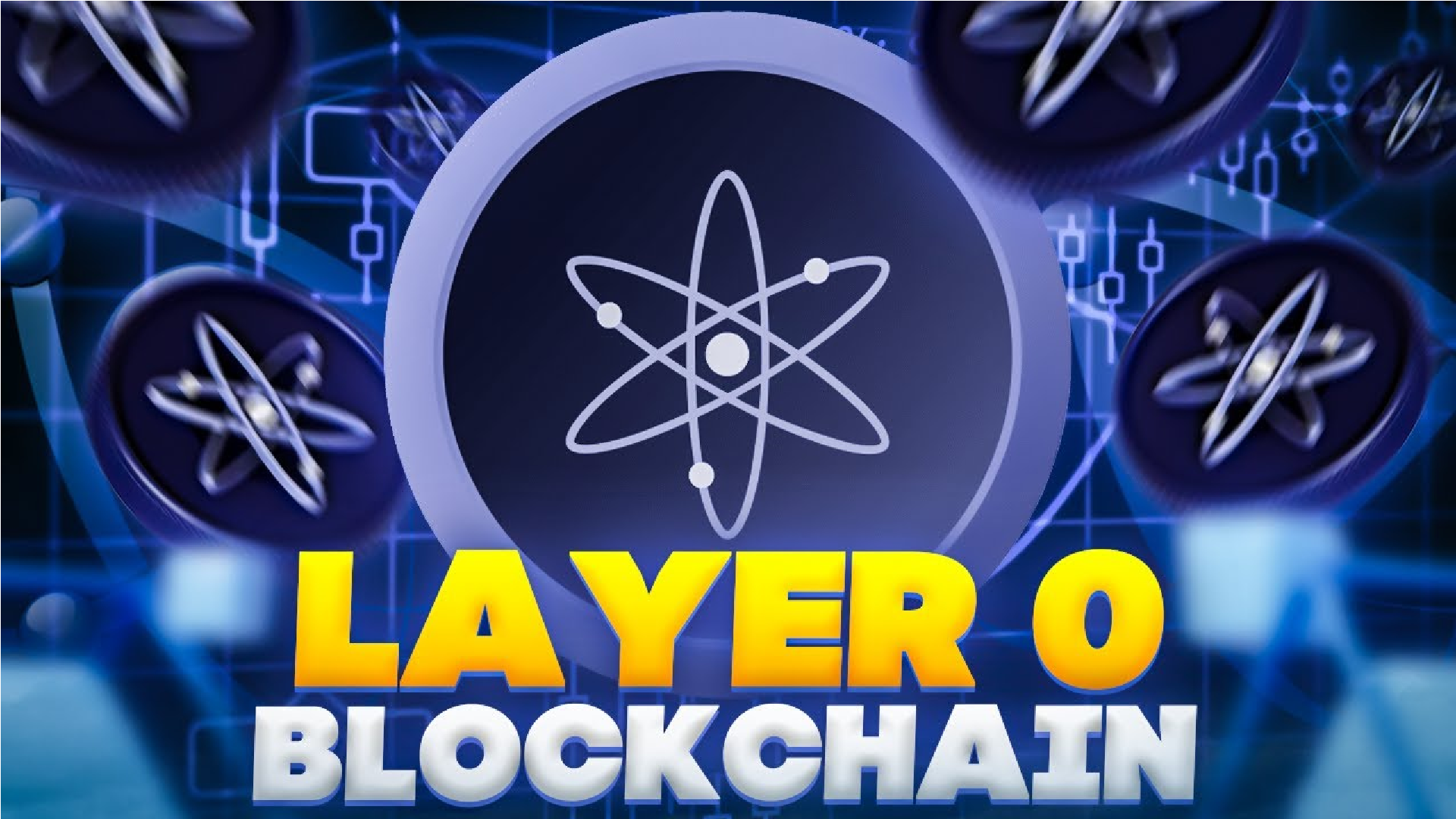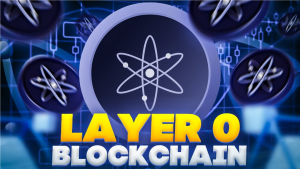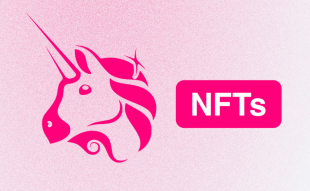Join Our Telegram channel to stay up to date on breaking news coverage
Cosmos is a cryptocurrency that is viewed as being extremely underrated, but we should keep an eye on it given how volatile the entire crypto market is. Cosmos is a multi-chain, proof-of-stake blockchain designed to enable data transfer between other blockchains.
Its aim is to create an “Internet of blockchains” using a set of open-source tools, including consensus protocol Tendermint, the Cosmos SDK framework, and the Inter-Blockchain Communication Protocol (IBC).
What Is Cosmos (ATOM)?
Cosmos’s current real-time price is $10.47, and its 24-hour trading volume is $141,555,341 USD. ATOM’s price has dropped by 0.34% in the last day and by 2.72% in the last seven days. It is worth noting that the current market capitalization of Cosmos is $3,008,131,790. When it comes to circulating supply, ATOM has 286,370,297 coins.
Cosmos is now ranked number 23 on the market. Cosmos aims to solve problems caused by the proof-of-work consensus process. This entails delayed and expensive transactions, as well as networks that are neither environmentally friendly nor scalable.
Furthermore, the Cosmos cryptocurrency project promises to simplify blockchain technology for developers. It accomplishes this by offering a modular structure. However, the main purpose of the project is to build a network of as many blockchains as possible so that they may communicate with one another.
For this reason, Cosmos is frequently referred to as Blockchain 3.0. In 2016, the Cosmos whitepaper was published. The first token sale took place a year later.
According to the Cosmos whitepaper, blockchains are isolated and cannot communicate. They are hard to build and cannot handle a small number of transactions per second. Following this, Cosmos caters to three problems in the blockchain: sovereignty, scalability, and sustainability.
- Sovereignty: All economic activity on blockchains occurs on a single chain. This results in centralized control, continuous costs for smart contract creators, and hefty prices for clogged chain users. To address this issue, the Cosmos SDK promises to be free for developers to use in order to create sovereign blockchain apps with no recurring charges.
- Scalability: Cosmos seeks to enable blockchain applications to scale to millions of users using horizontal and vertical scalability solutions. Cosmos aims for scalability by either duplicating a blockchain to relieve congestion or breaking out the apps into many application-specific blockchains. Interchain token transfers allow these numerous chains to function as a single network. Additionally, developers can increase throughput by using horizontal scalability (many parallel chains running the same application and controlled by a common validator set).
- Sustainability: Cosmos blockchains secure the network through an efficient proof-of-stake (PoS) consensus method. When compared to proof-of-work blockchains, this PoS algorithm cuts Cosmos’ carbon footprint by more than 99%.
Brief history about Cosmos (ATOM)
In 2016, the Cosmos whitepaper was published. The first token sale took place a year later. Cosmos was founded by Jae Kwon, Zarko Milosevic, and Ethan Buchman. They are also the creators of Tendermint, the primary contributor to the Cosmos network. Tendermint is an open-source blockchain launcher that allows you to build apps in any language.
Jae Kwon was the CEO of Tendermint; however, he resigned in 2020, leaving him as the project’s lead architect. Peng Zhong took over as project CEO in his absence. In addition, Jae Kwon, Zarko Milosevic, and Ethan Buchman founded the Interchain Foundation, a non-profit corporation in charge of the Cosmos network’s growth.
What is Cosmos Hub?
The Cosmos Hub is located at the heart of the Cosmos ecosystem (the Interchain), a network of interconnected application-specific blockchains that is constantly evolving.
There is a significant difference between the two: “The Cosmos” refers to the larger ecosystem of blockchains in which “The Hub” operates. ATOM, the Cosmos Hub’s native token, is used to engage in governance and safeguard the network.
The Hub was the first blockchain constructed with the Cosmos SDK and could play an important role in the ecosystem’s future. When it comes to constructing decentralized applications, the Cosmos ecosystem differs from other Layer-1 networks such as Ethereum.
Cosmos developers tailor distinct blockchains to their application’s needs, leading to greater flexibility and efficiency with less competition for resources. These are known as application-specific blockchains, and there is no limit to how many can be established.
The Cosmos ecosystem currently consists of approximately 50 Proof-of-Stake blockchains that can communicate with one another using a communication protocol known as the Inter-Blockchain Communication Protocol (IBC).
While the Cosmos Hub does not currently support smart contracts, it intends to use its minimalist approach, high security, and trusted validator set to provide specialized services to the Interchain. Interchain (or replicated) security, for example, is a bootstrapping method that allows newer Cosmos chains to rent security from the hub.
These new chains will share a part of transaction fees and potentially token inflation with ATOM stakers in exchange for using the hub’s validator set.
Neutron Becomes First Cosmos Chain to Launch on Replicated Security
Neutron is a blockchain network that will use CosmWasm (Cosmos WebAssembly) to bring smart contracts into the Cosmos network. The Cosmos Hub, which is the interchain service provider for Cosmos, has given Neutron the go-ahead to start on Replicated Security (RS).
It’s happening! The first Consumer Chain is coming 🔥
Prop #792 passed!@Neutron_org will enter the Atom Economic Zone ⚛️
The launch is set for Wednesday, May 10th at 3 PM UTC#Cosmonauts stay tuned, history awaits us! pic.twitter.com/KB0ljrzyt3
— Cosmos Hub ⚛️ (@cosmoshub) May 8, 2023
After several audits, installing key modules, and successfully deploying on the testnets, the Cosmos Hub started an on-chain vote to see if Neutron was ready to launch on RS. RS, which used to be called “inter-chain security,” is a shared security model made by the Cosmos Hub. It gives projects that start as consumer chains on the Hub a higher level of security.
ATOM is the Cosmos Hub’s primary token, and it aims to secure the Hub’s interchain services. On the platform, ATOM offers three use cases.
- As a spam prevention mechanism, the token is used to pay fees. The fee amount may be proportional to the computation required by the transaction.
- ATOM can be “bonded” to earn block rewards as a staking token. The amount of ATOM staked determines the economic security of Cosmos Hub. More tokens are collateralized, which means more shares are at stake, and the cost of attacking the network rises. As a result of having more bonded ATOM, the network has more economic security.
- ATOM holders can manage the Cosmos Hub with their staked ATOM by voting on the proposals.
How does the cosmos work?
The Cosmos network is made up of multiple blockchains that work together. These groups of blockchains are called zones. Each zone is linked to what are called hubs, which are major blockchains. In 2019, the Cosmos Hub, the first hub on the Cosmos network, was built.
Cosmos works well with a lot of different crypto assets and apps. You can connect any blockchain system to Cosmos by creating a new zone. This lets you send tokens directly from one zone to another without going through a third party.
Visit our guide to the best altcoins to buy here.
Different Byzantine Fault-Tolerant (BFT) consensus methods are used to run the blockchains in the Cosmos network. The BFT system can be different for each blockchain. Basically, BFT makes it possible for the network to always come to an agreement, even if some of the system parts don’t agree.
On the Cosmos network, there are three main tools that help people make blockchains.
- IBC stands for Inter-Blockchain Communication Protocol. It is compatible with any blockchain engine that provides instant finality and allows for the movement of money or data between blockchains.
- Tendermint Heart. It is a BFT consensus technique that completes a transaction after the creation of a new block. As a result, it gives users immediate closure.
- SDK for Cosmos. It’s a framework for creating safe blockchain apps on the Tendermint Core.
Related
- Cosmos Price Prediction for Today, April 27: ATOM/USD Gears Up for Recovery Above $10.0
- Cosmos Price Prediction for Today, January 3: ATOM/USD Gains More Than 3% to Start 2023
- Cosmos Hub is offering grants to those interested in revamping ATOM
- Cosmos Price Prediction for Today, February 1: ATOM/USD Keeps Moving Higher as Price Touches $14.8
Best Crypto Discord

- Get Educational Courses & Tutorials
- Free Content & VIP Group
- Jacob Crypto Bury Market Analysis Videos
- Leverage Trading Signals on Bybit
- Next 10x Altcoin Gems
- Upcoming Presales & ICOs

Join Our Telegram channel to stay up to date on breaking news coverage


